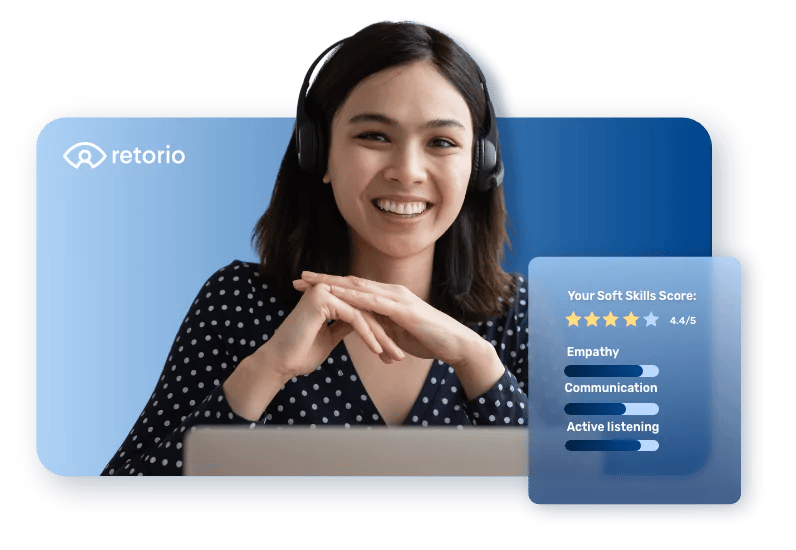66% of organizations [1] have implemented PIPs as a performance management tool to address performance issues.
Maintaining a high-performing workforce is vital to achieving organizational success - this we know. That said, it is important to understand the importance of fostering a culture of continuous improvement, ensuring that your team members are consistently equipped with the competencies and knowledge to thrive in their roles.
However, what happens when an employee's performance falls far below expectations? More importantly, what can you do about it? This is where performance improvement plans (PIPs) come into play.
If the right attitude and performance management tools are applied, poor performance will be improved.
By mastering the art of this valuable tool, you can empower your organization to effectively guide employees toward receiving their full potential, fostering a culture of high performance, and contributing to the overall success of your organization.
What's in this post:
What is a performance improvement plan (PIP)?
A performance improvement plan (PIP) is rather self-explanatory.
Definition: It is essentially a formal document that outlines an employee's performance issues that have been reoccurring and highlights a clear roadmap for improvement.
It is a collaborative effort between the employee, and their manager to identify areas for improvement and growth, set measurable objectives, and track progress over a defined timeframe to meet performance goals.
They outline an employee's overall performance, successes and challenges, and the goals that they should aim for. However, the criteria for the 'success' of a performance improvement plan can differ, depending on the situation of the employee and the goals that your organization aims to achieve.
You may also be interested in knowing how your managers can improve their performance as well.
When should a performance improvement plan be implemented?
Your organization can customize a performance improvement plan template to address various performance issues. For instance, a PIP process can target enhancing work quality, goal accomplishment, or meeting growth targets.
If properly implemented, an employee performance improvement plan can work wonders for employees who are struggling to reach their potential and deliver top performance. It provides employees with defined instructions and guidance on how to improve and a clear metric to assess their progress.
To be effective, PIPs must be driven by a genuine and motivated desire to assist employees in their development.
What good is a performance improvement process if the employers themselves are not motivated to see their employees succeed?
It is therefore necessary for managers to communicate their expectations, have regular check-ins, and provide support where needed. These actions contribute to boosting employee morale.
It is also worth noting that PIPs are not exclusively for employees who are struggling in their current roles. They can also help structure a position for an employee who is currently feeling unfulfilled and would like to see a change in their position and career.
A PIP can prepare an individual to advance to a higher-level role or transition laterally into a position that better aligns with their interests and abilities.
"The goal of a personal improvement plan (PIP) is to find out what problems a team member may be having and help them solve them. Having planned conversations with your team members about their successes, challenges, action plans, deadlines, and the tools or resources they need to get the job done is a simple but powerful way to help anyone do their job better."Christiaan Huynen, CEO and founder at DesignBro.
-%20Definition%2c%20template%20%26%20process%201%20.webp?width=600&height=400&name=Retorio%20Performance%20improvement%20plan%20(PIP)-%20Definition%2c%20template%20%26%20process%201%20.webp)
level up to higher positions as well as cultivate a culture of continuous learning.
How to write a performance improvement plan
An effective performance improvement plan should include an element of self-reflection for both the employee and the manager. This allows for your managers to also reflect on their leadership style and see if their actions may have contributed to this moment.
A PIP is also an opportunity for performance reviews as well as a 360-degree review for both parties. This means that a PIP process should be a dialogue to exchange useful feedback and provide a safe space for employees to express their concerns, challenges, and how their manager could provide better support for guidance that will help them to succeed.
Here are some of the key elements of a well-written performance improvement plan:
-
Employee information: Name, job title, department, start date.
-
Performance issues: Clear and defined statements of the employee performance deficiencies and where improvement needs to be made.
-
Performance strengths: Despite their current struggles, it is also important to outline where the employee shows acceptable performance and has a stronger potential for personal growth.
-
Goals and objectives: Set SMART goals that address the performance issues and align with the company's objectives and mission.
-
Timeline: This goes hand-in-hand with the goals and objectives. Managers must set a defined timeframe for achieving the goals.
-
Support plan: This is a plan that managers should create to provide the employee with the necessary resources and support to improve the employee's performance, such as training, coaching, or mentorship.
-
Evaluation plan: A plan for tracking the employee's progress and evaluating their success in meeting the goals.
-%20Definition%2c%20template%20%26%20process%203.webp?width=600&height=447&name=Retorio%20Performance%20improvement%20plan%20(PIP)-%20Definition%2c%20template%20%26%20process%203.webp)
Tips on how to write an effective performance improvement plan:
-
Start the performance plan by documenting the employee's current performance issues: Be specific and provide clear examples of behaviors or KPIs that are not meeting expectations.
-
Work with the employee to set SMART goals: Make sure the goals are challenging but also achievable, and that they are aligned with the employee's job responsibilities and the company's objectives.
-
Develop a support plan: Identify the necessary resources and assistance that your employee will need to improve their performance. This also goes hand in hand with a performance review process. Ask your employees what they think they need to develop their performance.
-
Establish a timeline for tracking progress: It is important for managers to set up regular meetings with their employees to review their performance progress and consistently provide constructive feedback. This also allows managers to get feedback from their employees on what they need, which goals have been accomplished, and what new goals there might be to add.
-
Be clear and concise throughout the performance improvement plan.
-
Have a positive attitude: The goal of a performance improvement plan is to help your employees improve and become well-versed in their roles. It is not to punish them, but instead, to show them what they can be capable of and encourage them to develop a mindset of continuous improvement.
What to do once a performance improvement plan has been implemented?
-
Communicate the performance improvement plan clearly to the employee and make sure that they understand and agree on the performance issues that have been listed, the goals, and the support plan. Remember to be on the same page as your employees to see improvement.
-
Be realistic. As tempting as it may be to want to see improvements overnight, it is not realistic, hence why it is important to set a realistic timeframe.
At the end of the performance improvement plan timeframe, it is important to evaluate the employee's progress. If the employee has met the set goals the performance improvement plan can be closed.
However, if the goals have not been met, the performance improvement plan can be extended or the employee may need to be considered for a different improvement plan or in heightened circumstances, termination of employment.
Extra Tip: What is your definition of 'acceptable performance'? Include that in your criteria and use behavior from your top performers to see how they have improved performance.
It is useful to also reflect on why the employee has not met the set goals and what the gaps are. At the end of the day, a performance improvement project is almost like a self-improvement project for each individual. Therefore, when a particular employee fails to bridge their performance gaps, and boost productivity, it may be time to look into what the other root cause could be.
Performance improvement plan template
Here is an outline for a performance improvement plan that allows your managers to set clear expectations, and a smart framework for goal setting, allowing you to empower employees to improve on their performance issues and encourage them to succeed.
-%20Definition%2c%20template%20%26%20process%204-1.webp?width=1920&height=960&name=Retorio%20Performance%20improvement%20plan%20(PIP)-%20Definition%2c%20template%20%26%20process%204-1.webp)
-%20Definition%2c%20template%20%26%20process%205.webp?width=1920&height=960&name=Retorio%20Performance%20improvement%20plan%20(PIP)-%20Definition%2c%20template%20%26%20process%205.webp)
Additional Tips
-
Create a positive and supportive environment for the employee. Let the employee know that you believe in their ability to improve and are there to help them succeed.
-
Focus on the employee's strengths and build on them. Encourage the employee to use their strengths to overcome their weaknesses.
-
Provide specific and actionable feedback. Tell the employees what they are doing well and what they need to improve. Help them develop a plan for how to improve their performance.
-
Be patient and persistent. It takes time for people to change their behavior. Don't give up on the employee if they don't see results immediately.
Benefits of a performance improvement plan
Here are some of the benefits of implementing a performance improvement plan.
| Improves employee performance | This is a clear given. PIPs provide a structured approach to identifying and pinpointing performance issues right at their core, setting clear goals, and tracking progress. This helps your employees to improve their skills, knowledge, and behavior patterns which ultimately leads to a better overall performance. |
| Enhances employee engagement and motivation | By investing in employee development, PIPs demonstrate that your company cares about your employee's success and professional development. This can boost your employee's motivation in training, and drive to contribute better to your company's success. This leads to a more productive and satisfied workforce. |
| Improves retention rates | Employees who feel supported and valued are more likely to stay with their company. PIPs can help employees feel heard and appreciated, leading to increased job satisfaction and retention. |
| Focuses training on performance gaps | PIPs help you to identify the specific performance gaps that employees need to address. This allows you to tailor your training programs to address those specific gaps and bridge them right when the gap emerges. |
| Aligns training and development with business objectives | PIPs help to identify the specific skills and knowledge that employees need to improve to meet business objectives. This can help you to develop training programs that are more relevant and effective. |
| Promotes a culture of continuous learning | PIPs can help to create a culture of continuous learning in the organization. By identifying performance gaps and providing opportunities for improvement, PIPs can empower employees to sit in the driver's seat and take ownership of their development. |
A performance improvement plan is a valuable tool for helping your company transform your workforce by transforming how your employees show up at work. Everyone has room for improvement, and it's only a matter of how efficiently you approach it.
However, it is not the only tool that you can use to save your struggling employees. Organizations can also leverage AI coaching platforms to provide personalized training programs that deliver customized, real-time feedback on exactly where your employees, managers, and leaders can improve on and how they can achieve their goals.
Retorio understands that success starts from the bottom up, while also understanding that it is often the leaders that have trouble setting up a good example for their team.
-%20Definition%2c%20template%20%26%20process%202.webp?width=1920&height=960&name=Retorio%20Performance%20improvement%20plan%20(PIP)-%20Definition%2c%20template%20%26%20process%202.webp)
Retorio's AI coaching platform helps you to identify your employee's strengths and areas for improvement and allows you to build your training programs within minutes. Tracking progress and providing actionable feedback has never been easier.

It is also not only about pinpointing the areas for development but also giving your employees a safe space to understand their strengths and weaknesses without feeling judged. By using Retorio, organizations have been able to:
- Identify and address performance gaps.
- Develop personalized roadmaps for improvement that cater to the learning needs and styles of each individual.
- Track progress and measure the impact of training.
See for your company customer facing teams how Retorio uses AI coaching to drive winning behavior and gain insights that no human coach can give.
Managers can terminate an employee after completing a performance improvement plan (PIP) if the employee has not made sufficient progress or if the employee's performance is still below expectations. However, it is important to note that managers must have a valid reason for terminating an employee after a PIP. This means that the manager must be able to demonstrate that the employee's performance is still not meeting the company's standards and that the employee has not made a good-faith effort to improve.
The length of a performance improvement plan (PIP) can vary depending on the severity of the performance issues and the employee's ability to improve. However, most PIPs typically last for 30 to 90 days.




